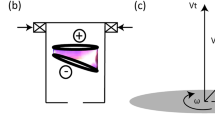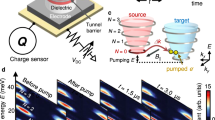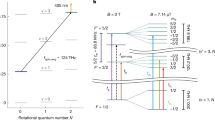Abstract
IN a report1 presented some twenty months ago on the values of e, h and e/m, attention was directed to the numerous inconsistencies shown by the experimental data. More recent developments have resolved a number of these inconsistencies, and it now seems possible to reduce all the really precise experimental data in such a way that only one fundamental discrepancy remains. Because of the great amount of experimental material here involved, it is necessary to omit all details in the present brief letter. I wish merely to remark that I am now using for c the value2 2.99776 × 1010 cm./sec., in place of the former 2.99796.
This is a preview of subscription content, access via your institution
Access options
Subscribe to this journal
Receive 51 print issues and online access
$199.00 per year
only $3.90 per issue
Buy this article
- Purchase on SpringerLink
- Instant access to full article PDF
Prices may be subject to local taxes which are calculated during checkout
Similar content being viewed by others
References
R. T. Birge, Science, 79, 438 (1934).
R. T. Birge, NATURE, 134, 771 (1934).
J. A. Bearden, Phys. Rev., 48, 385 (1935).
R. T. Birge, Phys. Rev., 40, 228 (1932) and reference 1.
H. R. Robinson, Phil. Mag., 18, 1086 (1934).
W. N. Bond, NATURE, 133, 327 (1934).
G. Kellström, NATURE, 136, 682 (1935). See also R. T. Birge, Phys. Rev., Dec. 15, 1935.
Author information
Authors and Affiliations
Rights and permissions
About this article
Cite this article
BIRGE, R. Interrelationships of e, h/e and e/m. Nature 137, 187 (1936). https://doi.org/10.1038/137187a0
Published:
Issue date:
DOI: https://doi.org/10.1038/137187a0
This article is cited by
-
Gravitationskonstante, spezifische Ladung und Massenverhältnis von Proton und Elektron
Die Naturwissenschaften (1938)
-
Electrical Evidence on Calcite Imperfection
Nature (1936)
-
Weltkonstanten und atomistische Gr��en
Die Naturwissenschaften (1936)



